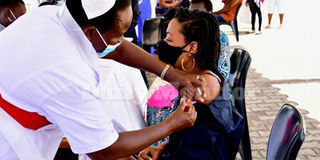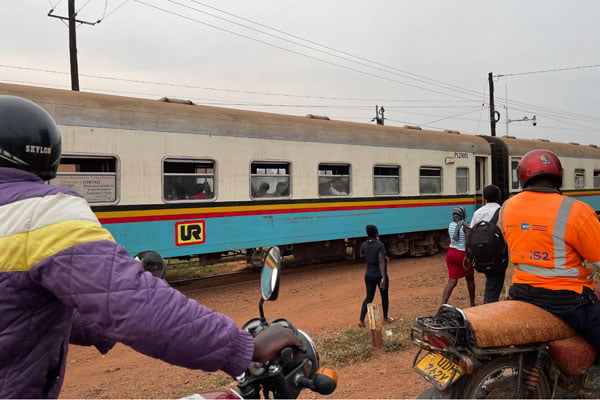15,000 health workers snub coronavirus jabs

A health worker administers a Covid-19 jab at Kololo Independence Grounds in May. PHOTO/FILE
What you need to know:
- WHO says health workers who are not vaccinated are at a high risk of developing severe disease.
A total of 15,000 health workers have not received their Covid-19 jabs despite the high risk of infection and death they face in the line of duty, according to government statistics .
The statistics, which the Ministry of Health released yesterday, also indicate that 112,608 (75 per cent) of the 150,000 health workers that the government plans to vaccinate, have either been partially vaccinated or not vaccinated.
This revelation follows past reports from the ministry that vaccine hesitancy is high among the frontline workers, a vice which some experts say has partly contributed to more than 50 Covid-19 deaths and thousands of infections among the personnel.
Speaking to journalists in Kampala yesterday, Mr Emmanuel Ainebyoona, the spokesperson for Ministry of Health, said only 37,392 health workers have been fully vaccinated against Covid-19.
“As of August 9, we have been focusing on our priority groups and we have targeted health workers. We have vaccinated 97,123 with the first dose and 37,392 with the second dose,” he said.
This means of the 150,000 health workers that the ministry plans to vaccinate, 134,515 have been vaccinated.
Receiving only one dose, according to the World Health Organisation, means the immunity of the health workers against the coronavirus is less effective.
Similarly, 15,000, who are not vaccinated, are at very high risk of developing severe disease and death in case they contract the virus.
The ministry earlier said inoculating the health workers against Covid-19 is aimed at shielding the crucial workforce from death and avoiding the collapse of the health system as the country grapples with the pandemic.
While still serving as the minister for Primary Healthcare, Dr Joyce Moriku Kaducu, in April 2021, warned that vaccine hesitancy among health workers would leave communities scared of taking the vaccines.
“Health workers are trusted people in communities. People follow them. How can you expect communities to warm up to the vaccine when health workers who need it most are not getting it? The low number of health workers vaccinated is a shame and needs to be addressed,” she said then.
However, Dr Mukuzi Muhereza, the secretary-general of Uganda Medical Association, like Mr Ainebyoona, yesterday said the problem had long shifted from hesitancy to shortage of vaccines.
Mr Ainebyoona said: “Since the second wave, we have seen an increased demand for the vaccine. The only challenge has been the availability of vaccines. Huge numbers of people are coming for vaccination countrywide.”
Dr Muhereza said there are structural issues that are hampering the vaccination drive.
“A district with more than 33 health units may have only five vaccination centres. So people [health workers] have to be ferried or they have to ride to the vaccination point and they reach when the vaccine is over. I will not fully blame the health workers for the hesitancy,” he said.
Dr Jane Ruth Aceng, the Health minister, has repeatedly said they were failing to bring in enough vaccines because of high global demand.
She said they had placed orders for more vaccines. The country was hoping to purchase vaccines from the Serum Institute of India, but the manufacturer suspended exports to focus on India’s population because of the spike in infections and hospitalisation.
The third rollout of vaccination, which started this week, will see the 586,080 doses of vaccines received last month from the global sharing initiative Covax and the Chinese government administered to the population.
Vaccines
Since the start of vaccination in March, the government has only managed to avail 1,725,280 doses of vaccines and the jabs were obtained through donations. The country has so far vaccinated 1,157,251 people against Covid-19, making the national vaccine coverage to stand at around 5 per cent, considering the target population of 21.9 million.




